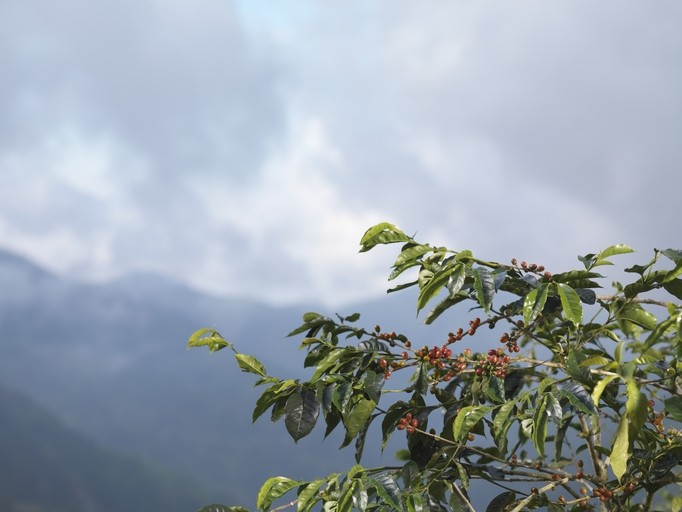Finding the most accurate way to measure the environmental impact of coffee

The Institute for Scientific Information on Coffee (ISIC) commissioned the French Agricultural Research Center for International Development (CIRAD) to review current processes for green coffee – the raw seeds of coffee cherries that have not yet been roasted - with the aim of creating a clearer picture of how to measure environmental impact.
The carbon footprint of green coffee can vary widely: depending on a wide range of factors from the level of nitrogen fertilizer used to the emissions produced by decomposing waste products, such as coffee husks.
But the key principle for creating accurate LCAs is ‘absolute transparency’ across the supply chain, says the ISIC.
Assessing 234 coffee systems
Coffee is produced in a number of countries with very different ecosystems: ranging from Brazil to Colombia to Vietnam to Ethiopia.
Meanwhile, different ways of calculating LCAs mean that estimates of estimates of environmental impacts can vary enormously.
In its review, CIRAD identified and reviewed 34 studies covering 234 coffee systems, alongside international agricultural guidelines, on measuring carbon footprints.
These studies were representative of the different regions and settings coffee is grown in (for example, 72% of the studied farm systems were located in central and south America, which aligns with the 70% of global coffee produced in this region).
Assessing the body of LCA studies illustrated to researchers just how diverse coffee systems are: but also ‘diverging assumptions’ and a lack of quality data in some areas.
Many studies and LCAs, note the researchers, have fallen into the trap of simplifying data. And in some situations, there simply isn’t enough primary data (particularly, for example, at the coffee plantation level).
The agricultural stage is particularly complex: contributing significantly to many impacts but – as a living ecosystem – has numerous configurations and where proper assessments do lie in the detail.
The review highlights four key factors which can greatly shape green coffee’s carbon footprint:
- Land Use Change – human-driven changes in use or management of land
- Varying levels of nitrogen fertilizer usage
- Coffee residues from pruning, leaf litter, and coffee husks - differing levels of residues vary emissions produced as they decompose and release stored carbon
- Wet process emissions – cleaning, sorting, and drying of coffee cherries and beans
The CIRAD review, therefore, highlights the need for transparency across the supply chain and recommends using IPCC (2006) guidelines for land use calculations.
Cécile Chéron-Bessou, lead CIRAD researcher on the review, explains: “Life cycle-based assessments are complex and based on numerous simplifications and choices.
"A key principle for these assessments is therefore absolute transparency around the exact choices and assumptions made as part of modelling.
"We hope our review will serve as a robust tool for transparent and sound measurement of green coffee’s carbon footprint – helping farmers and researchers to support good practices for sustainable coffee growing”.
The majority of reviewed studies looked at arabica coffee; only four looked at robusta. While arabica has been the dominant species in the past, robusta’s share is approaching 50% and thus was underrepresented.
In order to improve the robustness and accuracy of LCA of green coffee, the review recommends:
- to consistently apply the IPCC (2006) guidelines for land use and LUC accounting, i.e. clearly differentiating between long-term storage of biogenic carbon, over at least 20 years, and short-term biogenic carbon turnover, analysing transparently all carbon pools, including soil organic carbon;
- to model properly the perennial crop cycle, accounting for a weighted average of inputs and outputs along the cycle, depending on the various development stages;
- to quantify thoroughly all direct and indirect emissions in the field, including all amendments, mineral and organic, but also crop residues; and
- to check the mass balance along the supply chain, also beyond the plantation, in order to ensure that all co-products or wastes are considered and their emissions from treatment, recycling or disposal can be tracked.
Meanwhile, a more detailed report from CIRAD has been released in parallel to dive down with a series of recommendations to standardize measurements.
For example, it provides guidance on how to identify representative measurements for different coffee farm systems and consistently apply land use change modelling, and outline how best to estimate total biomass (including roots) of other trees present in coffee systems.
Coffee is a perennial crop – which lives for many years without replanting – so the review also looks at how to accurately model and measure across trees in different phases of maturity.
The Institute for Scientific Information on Coffee (ISIC) counts National Coffee Associations from around the world (including the US, UK and Japan) as well as six coffee majors: illycaffe, JDE Peet’s, Lavazza, Nestle, Paulig and Tchibo.
Its early focus was on studying and communicating scientific knowledge on the effects of coffee consumption on human health and wellbeing; however, it has broadened this focus to the health of the environment as well.










